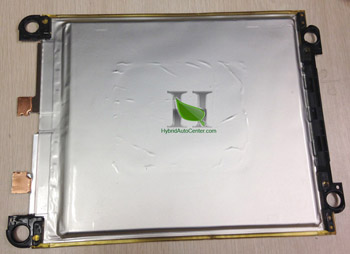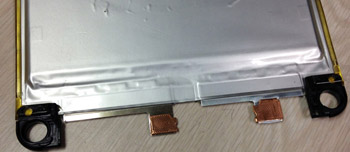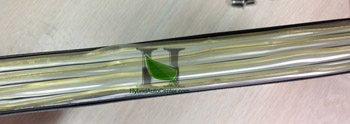- Részletek
- Írta: Molnár Norbert
- Kategória: Akku
- Találatok: 559
http://www.electricvehiclewiki.com/Battery_Capacity_Loss
http://hybridautocenter.com/HAC4/index.php?option=com_content&view=article&id=72&Itemid=631
Articles
Nissan Leaf Batteries
Nissan Leaf has a 24kW rated LiMn2O4 battery pack and total capacity of 66.2Ah is disclosed by Nissan. However the capacity measured in our shop on new car - at 2-3 cycles was only 64.5Ah. That is the maximum measured at 1/3C 4.2-2.5V range. The actual usable capacity in a car is 21.5 kWh which is 59Ah. The continuous power provided is up to 80kW at 230A.
Battery Module Details
Each battery pack contains 48 modules. Each module has 4 cells inside at 30Ah 3.8V - connected 2S2P.
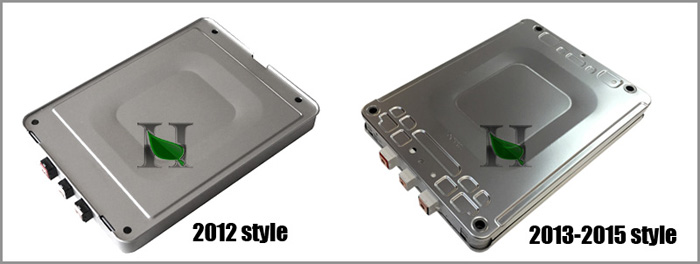
When a battery pack for a custom project is being calculated, every module should be considered as two batteries 3.8V / 60Ah each, already connected in series. As a result each module is 7.6V average, max 8.4V. For instance, to make 45V battery - 6 modules can be used.
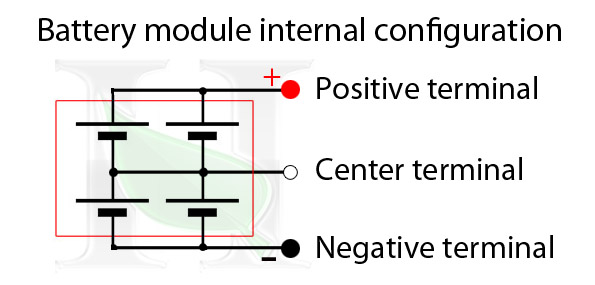
MODULE SPECIFICATIONS
| 4 cells in module | |
| Construction | 2 in-series pairs in parallel |
| Length | 11.9291" (303 mm) |
| Width | 8.7795" (223 mm) |
| Thickness | 1.3779" (35 mm) |
| Weight | 8.3775 lbs (3.8 kgs) |
| Output terminal | M6 nut |
| Voltage sensing terminal | M4 nut |
| Module fixing hole diameter | 0.3582" (9.1 mm) |
CELL SPECIFICATIONS
| Cell type | Laminate type |
| Cathode material | LiMn2O4 with LiNiO2 |
| Anode material | Graphite |
| Rated capacity (0.3C) | 33.1 Ah |
| Average voltage | 3.8 V |
| Length | 11.417" (290 mm) |
| Width | 8.504" (216 mm) |
| Thickness | 0.2795" (7.1mm) |
| Weight | 1.7624 lbs (799 g) |
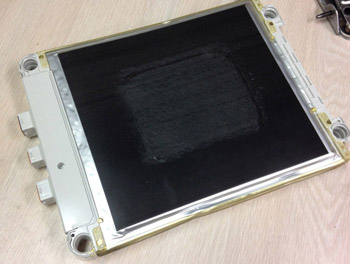
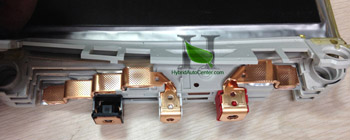
Charging
Every cell should not go over 4.2V during the charging in any case. The battery should be charged CCCV to 4.2V. In many cases it is recommended limiting the charging to 4.1 - 4.15V, (especially if not using BMS).
The charging current should not go over 120A. High current charging shortens the battery life. Nissan also does not recommend for everyday use. The normal charging is 15-20A - 3-4h or 1/3C.
Using a BMS during charging is strongly recommended. It is a must to protect the batteries from overcharging and to do the balancing. An intelligent BMS will protect also from overcharging at low temperatures.
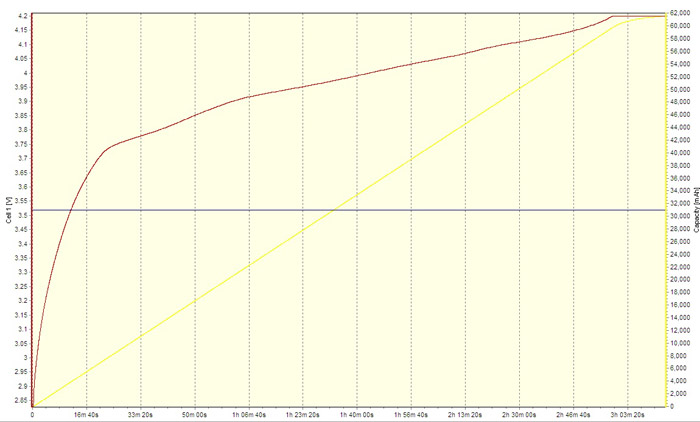
Discharging
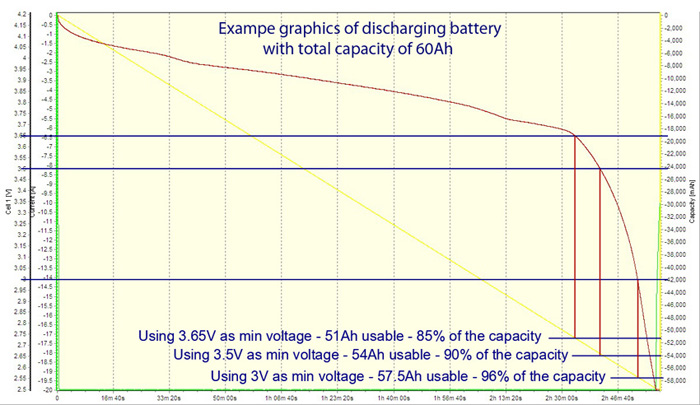
According US Department of ENERGY study* these batteries can provide up to 240A continuous or over 540A short time on pulse (time is not specified).
See the graphics for the level of discharge vs. used capacity.
Most lithium batteries are tested by standard at 1/3C. If measured at 1/7 or 1/10C they could show significantly higher results. And to the opposite, at 1C the capacity will be lower. A 60Ah battery measured at 1/3C (20A) will show 50Ah at 4C (240A tested).
If higher current of discharge or higher capacity is necessary, these batteries could be connected in parallel - see the graphics bellow. Each module contains two cells so for this reason it is illustrated as two separate batteries connected in series.

Temperature requirements
These cells cannot be charged at temperatures under 0C (32F). If this is necessary a battery heater during must be added and used during the charging process.
Storage
These batteries can hold the charge for a long time. Under normal conditions, stored properly they have very low self-discharge. Our experiments showed that a battery module stored for a year lost only 50mV - went from 3.8V to 3.75V. That is equivalent to loosing 10% charge per year. For long term storage is recommended battery to be at 40-50% charge.
Storage at higher temperatures (over 50C) decreases the battery life. The battery could be stored at low temperatures, but should not be charged at temperatures under 0C.
Charging/Discharging cycles
The battery is rated for 1200 cycles at 0-100% charge until it reaches the 80% of the capacity or 5000 cycles when used 0-80% charge.
Click here to see the study.
Disclaimer
This page is for informational purposes only and should not be considered a reliable source of information. The manufacturer does not provide an official information. All presented here parameters are collected from different internet sources or are based on our own observations and should not be considered as instructions on how to use these batteries. Use them at your own risk.
Watch this video to see how likely this battery will catch fire:
- Részletek
- Írta: Molnár Norbert
- Kategória: Akku
- Találatok: 492
- 58Ah (109$)
- 2013 - 2015 62Ah, 2x3.8V, 470Wh (129$)
- 2015 64Ah, 500Wh (139$)
- a
- b
- c
LITHIUM BATTERY MODULE LiMn2O4/LiNiO2
Each module contains two lithium cells - each 3.8V average, total 7.6V
Measured capacity 64Ah
max continuous power 1875W or 240A
Peak current 540A
Made for Nissan LEAF EV CAR
Maximum voltage 4.2V per cell / 8.4V per battery
Average voltage 3.85 V
90% of the capacity voltage - 4.2-3.65V
These battery modules come from a 2015 car.
MODULE SPECIFICATIONS
| Number of cells | 4 |
| Construction | 2 in-series pairs in parallel |
| Length | 11.9291" (303 mm) |
| Width | 8.7795" (223 mm) |
| Thickness | 1.3779" (35 mm) |
| Weight | 8.1571 lbs (3.7 kgs) |
| Output terminal | M6 nut |
| Voltage sensing terminal | M4 nut |
| Module fixing hole diameter | 0.3582" (9.1 mm) |
CELL SPECIFICATIONS
| Cell type | Laminate type |
| Cathode material | LiMn2O4 with LiNiO2 |
| Anode material | Graphite |
| Rated capacity (0.3C) | 33.1 Ah |
| Average voltage | 3.8 V |
| Length | 11.417" (290 mm) |
| Width | 8.504" (216 mm) |
| Thickness | 0.2795" (7.1mm) |
| Weight | 1.7624 lbs (799 g) |
2. oldal / 2
